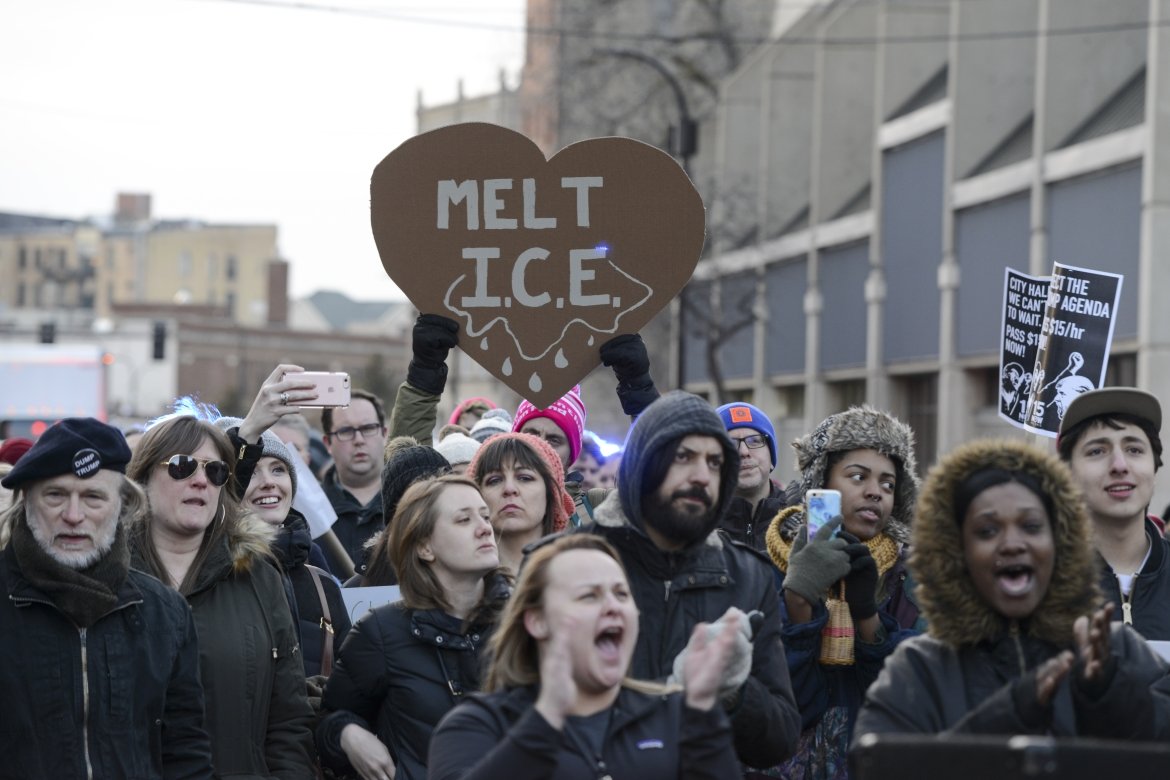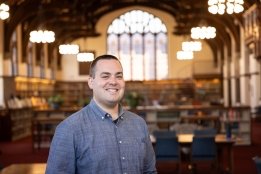Exploring U.S sanctuary policy through new database

Mount Holyoke College researchers have developed a new open-access, interactive database and story map of U.S. immigration sanctuary policies that were passed between 2001 and 2014.
In 2013, Kiana London ’13 asked Associate Professor of Geography and International Relations Serin Houston if she had any research positions available. London’s request came at just the right time, as Houston wanted to begin a research project that utilized student researchers, and she had just learned about Mount Holyoke College funding for such endeavors.
Fast forward from that fortuitous discussion with London to the present where, after years of collaboration with several student research assistants, Houston and Instructional Technologist Anastasia Tucker have created and launched a new open-access, interactive archive and story map of 234 United States immigration sanctuary policies. All these policies were passed at the town, city or county scales.
“At first, I thought, ‘Let’s make the first database of all the sanctuary policies in the country,’ which was very ambitious and absolutely impossible, both discursively and practically, because there’s not a universally shared understanding of what constitutes a sanctuary policy,” Houston said. “So, we established our criteria for evaluating if policies were sanctuary ones or not and then set about gathering all the policies we could.”
The policies in this archive are mayoral executive orders, ordinances, police department and county sheriff office policing policies, or resolutions that regulate a municipal authority’s actions and express its views on immigration policy and local enforcement.
Houston published articles on sanctuary but wanted to visualize the policy archive to show some spatial and temporal dimensions.
“I was curious about how we could make these policies and ideas about sanctuary available to a broader audience by distilling some of the information into formats that people could more readily take it in,” she said.
Moreover, Houston noticed that the discourse on sanctuary was lacking in evidence. She saw a visualization of her archive as a way to address this issue.
“Sanctuary is highly politicized in this country, and a lot of the discourse in circulation isn’t evidence-based. I wanted to counter that with my research,” she said.
Houston and Tucker intentionally made this digital scholarship accessible to a general audience.
“The story map is very strong at representing the temporal nature and also the spatial nature. And it’s underpinned by the archive, which we categorized very carefully,” Tucker said. “So, people can do a skim if they want to, or they can focus on a geographic area. They can focus on a policy type, or they can even go down to policies passed at cities versus counties.”
“We wanted to make it broad and granular at the same time,” Tucker continued, “which is why, too, you’ll see maps presented in different ways and different specific contexts highlighted throughout the story map.”
In addition to offering engaging and dynamic information about sanctuary to the general public, the story map and archive can assist scholars and educators.
“I’ve been in touch with scholars globally who are examining different places that are trying to create policies that make life for non-citizens and citizens alike more manageable,” Houston said. “I also have colleagues who, when I shared our resources with them, couldn’t wait to teach with them and show students the different ways that knowledge production happens.”
Houston and Tucker’s story map of U.S. sanctuary policies is among the few that are evidence-based, and the sanctuary archive is, as far as they know, the first that includes metadata. These scholarship contributions enable people to better understand that sanctuary policies are not all the same and offer tremendous resources to educators and scholars alike. The archive and story map designed by Houston, Tucker and their colleagues at Mount Holyoke College highlight that sanctuary is a process — one that reflects civic values and understandings of justice.
The archive and story map are free to use and fully accessible.
